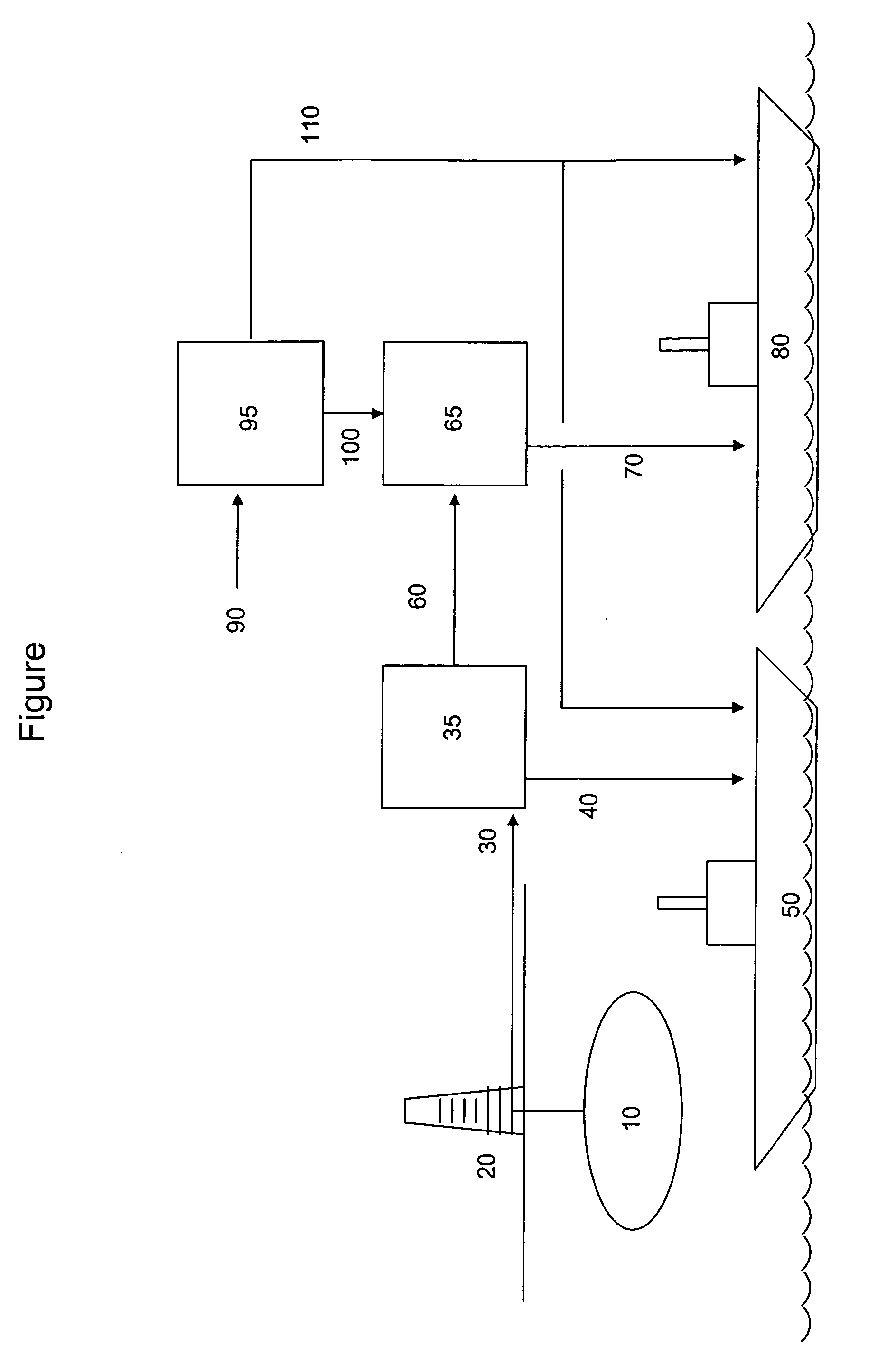Use of waste nitrogen from air separation units for blanketing cargo and ballast tanks
a technology of air separation unit and waste nitrogen, which is applied in the direction of liquefaction, other chemical processes, lighting and heating apparatus, etc., can solve the problems of product biodegradation, product oxidation, and often encountered problems, and achieve the effect of reducing the oxygen content of the ship-board tank
- Summary
- Abstract
- Description
- Claims
- Application Information
AI Technical Summary
Benefits of technology
Problems solved by technology
Method used
Image
Examples
Embodiment Construction
[0022] The present invention relates to an integrated process for the production and transportation of a hydrocarbonaceous product in a transport vessel containing one or more ballast tanks and one or more cargo tanks. The transport vessel may optionally also comprise one or more liquid nitrogen storage tanks. In the present invention, a nitrogen containing blanketing agent is used to blanket the hydrocarbonaceous product in the cargo tank and optionally the ballast tank. Advantageously, this nitrogen containing blanketing agent is produced as part of the process for obtaining the hydrocarbonaceous product. Accordingly, the present invention also relates to a transport vessel for transporting the hydrocarbonaceous product wherein the marine vessel is equipped to store and use the nitrogen containing blanketing agent from the process to produce the product. The present invention further relates to the primarily nitrogen containing blanketing agent.
Definitions
[0023] The following te...
PUM
| Property | Measurement | Unit |
|---|---|---|
| volume % | aaaaa | aaaaa |
| volume % | aaaaa | aaaaa |
| volume % | aaaaa | aaaaa |
Abstract
Description
Claims
Application Information
 Login to View More
Login to View More - R&D
- Intellectual Property
- Life Sciences
- Materials
- Tech Scout
- Unparalleled Data Quality
- Higher Quality Content
- 60% Fewer Hallucinations
Browse by: Latest US Patents, China's latest patents, Technical Efficacy Thesaurus, Application Domain, Technology Topic, Popular Technical Reports.
© 2025 PatSnap. All rights reserved.Legal|Privacy policy|Modern Slavery Act Transparency Statement|Sitemap|About US| Contact US: help@patsnap.com

